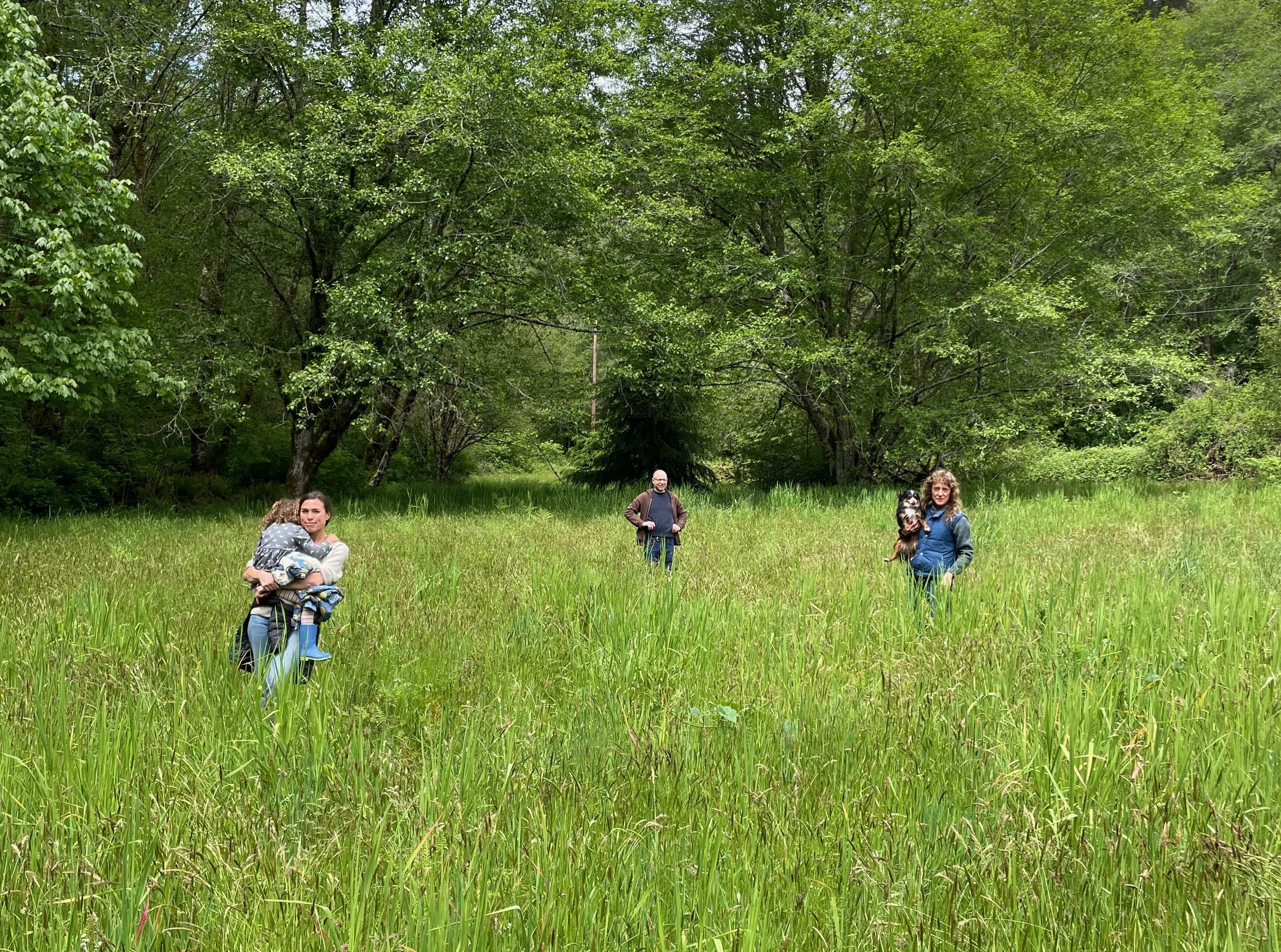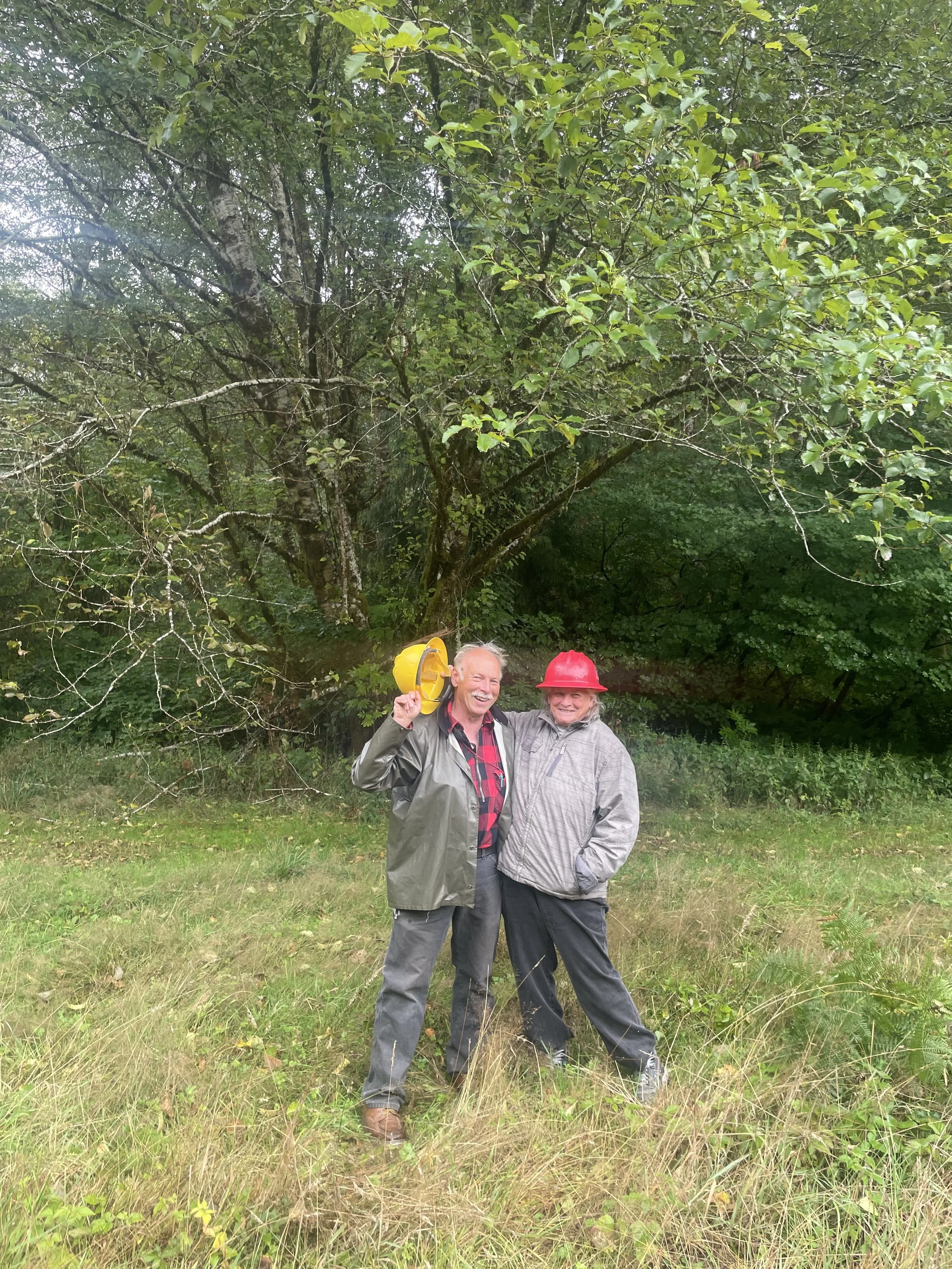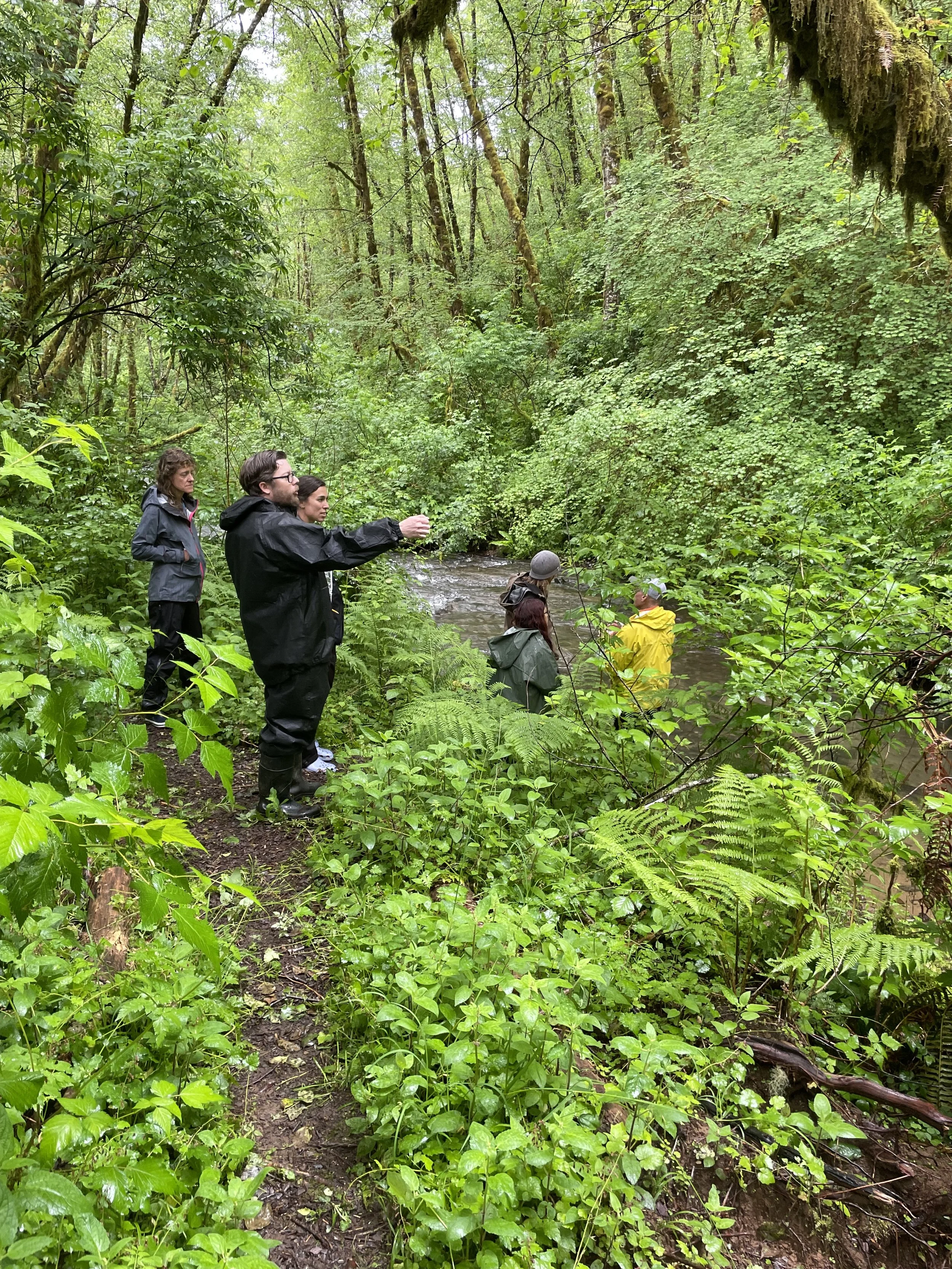We recognize that Sweet Root Hollow is on the ancestral lands of the Nestucca band of the Tillamook people who lived in harmony with this place for tens of thousands of years before the arrival of European settlers.
For our two families—city dwellers without much experience in forest management (actually zero experience)—suddenly winning the opportunity to care for a dynamic stretch of forest on the Oregon Coast was a long dreamed of opportunity, but also a humbling crash course in learning to listen. Approaching land ownership from the perspective of Stewardship is a not-so-subtle paradigm shift. It moves the conversation from “What can this place do for me?” to “What can I do for this place?” In order to start answering that question we needed to do a deep dive in understanding where we were and what was already going on.
Since purchasing the property we’ve gone on dozens of walks with biologists, permaculturists, government agencies, nonprofits, environmentalists, neighbors, and anyone else who might know anything about these woods. We’ve read books and policies, applied for grants, hauled trash, battled blackberries, sat in silence, milled our own lumber, and learned how to drive a tractor. We created a Forest Management Plan with Oregon Natural Forestry, and partnered with Northwest Oregon Restoration Partnership to restore vital habitat in riparian areas and plant a generation of evergreens that will refill the forest canopy as the current predominant tree species, Alder, is reaching the end of its life cycle. As we walked the trails and explored the creeks with more and more experts, we heard variations on the same advice again and again, “This place is incredible, don’t mess it up!”
David Wells, from Oregon Natural Forestry, and his wife working with us on a forest management plan.
Thomas Gherkins from NRCS discussing stream health.
Salmon make their way into Farmer Creek to spawn in the fall and you are very likely to see any number of deer, elk, owls, hawks, crows, ravens, hummingbirds, snakes, bats, rabbits, moles, herons and many many more. The woods along Farmer Creek are an exceptional example of a pristine Pacific Northwest Rainforest. The meadows load up with native wildflowers and berries in the spring and summer. There is so much life here. Our work really is to protect it.
These plants and animals have been here much much longer then us and they’ll be here long afterwards. So while we humbly get to call ourselves the “owners” of this place, we understand that we are really just visitors and we try to behave accordingly.


